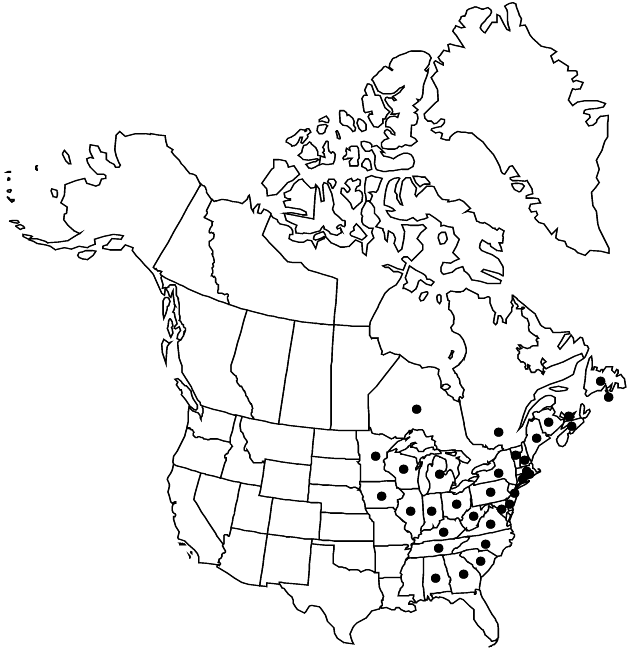Doellingeria umbellata var. umbellata
Plants 50–200 cm. Leaves abaxially glabrous or sparsely short-piloso-villous (fewer than 10 hairs/mm2), especially on larger veins. Phyllaries sparsely pilose, especially apically. 2n = 18.
Phenology: Flowering late summer–fall.
Habitat: Moist soils, clearings, thickets, wood margins
Elevation: 0–1800 m
Distribution

St. Pierre and Miquelon, Nfld. and Labr. (Nfld.), N.B., N.S., Ont., P.E.I., Que., Ala., Conn., Del., Ga., Ill., Ind., Iowa, Ky., Maine, Md., Mass., Mich., Minn., N.H., N.J., N.Y., N.C., Ohio, Pa., R.I., S.C., Tenn., Vt., Va., W.Va., Wis.
Discussion
Variety umbellata is common in the central and northern part of its range, becoming less so in the southern Appalachian Mountains and the foothills of northern Georgia and Alabama. More densely pubescent forms occur in the northeastern portion of the range. Minor forms have been described: Aster umbellatus forma convexus Allabach, A. umbellatus forma flexicaulis (House) Fernald, A. umbellatus forma discoideus Victorin (rays present, immature), A. umbellatus forma intercedens Fernald (more pubescent plants), Doellingeria umbellata forma flexicaulis House, and D. umbellata forma intercedens (Fernald) Moldenke.
Selected References
None.
Lower Taxa
"[" is not declared as a valid unit of measurement for this property."]" is not declared as a valid unit of measurement for this property.